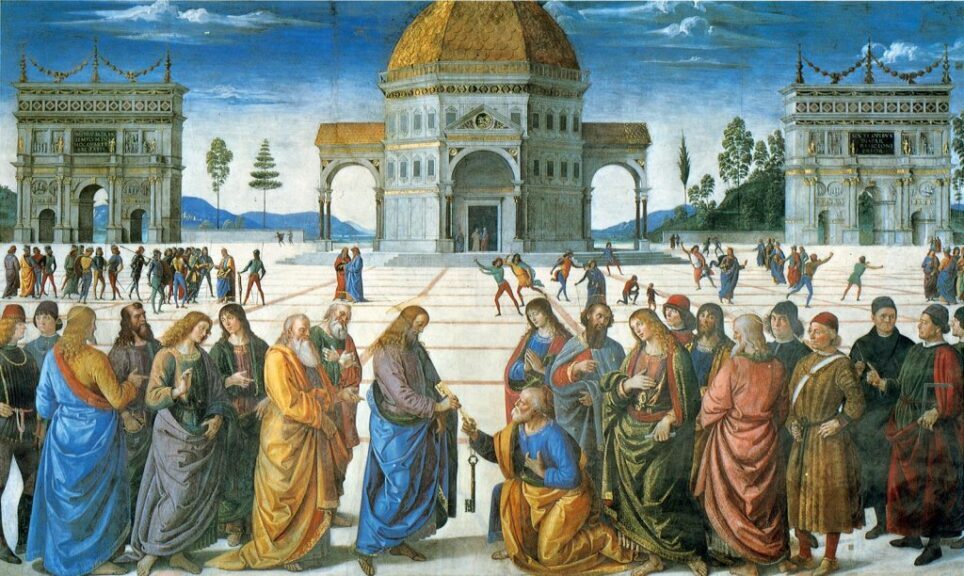The origins of the Roman Catholic Church are often traced through a complex tapestry of historical events, theological evolutions, and ecclesiastical decisions. At the heart of this narrative lies the interplay between Jerusalem, Rome, and the nascent faith community known as the Early Church. This exploration into the roots of the Roman Catholic Church not only elucidates its geographical and historical beginnings but also sheds light on the profound spiritual significance it holds for millions across the globe.
To comprehend the genesis of the Roman Catholic Church, one must first consider its inception in Jerusalem. Following the crucifixion and resurrection of Jesus Christ, Jerusalem emerged as the epicenter of the early Christian movement. The city was pivotal, serving as the land of significant events and revelations that shaped the faith. It was here, in the Upper Room, that the disciples received the Holy Spirit on Pentecost, igniting a fervent missionary zeal within them.
The apostles, particularly Peter and James, played foundational roles in the establishment of early Christian communities. With fervent conviction, they began spreading the message of Jesus, thereby fostering a burgeoning faith community. This initial organization was rudimentary, characterized by shared meals, communal prayer, and the fervent witness of the apostles. However, the burgeoning movement faced vehement opposition from both Jewish authorities and the Roman Empire.
As the early Christians began to encounter persecution in Jerusalem, their mission expanded beyond its confines. The scattering of these believers, propelled by the threat of impending doom, facilitated the yoga of faith, bringing the message of Christ to wider audiences. From the decaying walls of Jerusalem to the urban centers of the Mediterranean, the seeds of what would become the global Catholic Church were sown amidst dynamic cultural exchanges and diverse populations.
It is in this milieu that the significance of Rome begins to unfold. By the end of the first century, Rome had emerged as the capital of the Roman Empire, the very heart of civilization. This geographic and political prominence bestowed upon the city a pivotal role in the development of Christianity. The intersection of Hellenistic culture and imperial authority created a fertile ground for the spread of Christian doctrine.
One cannot discuss the Roman Catholic Church’s formation without acknowledging the centrality of Apostle Peter. Traditionally considered the first pope, Peter’s martyrdom in Rome solidified the city’s status as the spiritual epicenter of the Christian faith. The notion of succession arose, where subsequent bishops of Rome would be viewed as inheritors of Peter’s apostolic authority. This alignment of authority not only solidified leadership within the emerging Church but also established a theological lineage that would resonate for centuries.
The confluence of Jerusalem’s foundational stories and the apostolic authority rooted in Rome forged a potent ecclesiastical identity. The early Church was marked by persecution, doctrine formulation, and ecumenical councils. The establishment of the Nicene Creed in 325 AD under Emperor Constantine was particularly significant, as it helped demarcate orthodoxy amidst rising theological disputes. This period also witnessed the elevation of the bishop of Rome’s status, linking the lineage of Peter to the governance of the Church.
However, the Church’s development was not without challenges. The establishment of the Roman Catholic Church was riddled with disputes—between East and West, doctrinal interpretations, and issues of authority. These tensions would ultimately lead to the Great Schism in 1054, a watershed moment that diverged Eastern Orthodoxy from Western Catholicism. Yet, it is essential to recognize that while these divisions occurred, the roots of each tradition trace back to that initial scene in Jerusalem and the subsequent flourishing of faith in Rome.
The Roman Catholic Church, both a historical and spiritual entity, developed a rich tapestry woven from diverse influences. The liturgical practices, ecclesiastical hierarchy, and theological doctrines emerged as a response to the myriad challenges inherent in governing a faith that spanned continents and cultures. The sacramental life, particularly the Eucharist, became a cornerstone of Catholic practice, unifying believers through a shared experience rooted in the Last Supper.
In contemporary society, the fascination with the origins of the Roman Catholic Church prompts deeper contemplation about authority, tradition, and identity. For believers, it underscores the continuity of faith from the apostles to present-day practices. The narrative invites reflection on the sometimes tumultuous journey of Christianity and how, despite various schisms and controversies, the core tenets of faith have endured.
Moreover, this historical exploration serves as a mirror for modern challenges within the Church. Efforts towards reconciliation, ecumenism, and interfaith dialogue reflect an awareness of the historical wounds that persist. The common observation of division and conflict within the Church invites a deeper inquiry into the foundational imperatives that can foster unity, drawing from that original fervor and commitment witnessed in Jerusalem.
In conclusion, the Roman Catholic Church’s origins can be traced through the rich and intricate interactions between Jerusalem and Rome, among the early believers who faced adversity with unwavering faith. The interplay between these two cities—one laden with the momentous events of Christ’s life and the other crowned with authority and influence—stands testament to a journey of faith that has evolved yet remains steadfast. This historical trajectory invites ongoing reflection, encouraging believers to engage with their faith, understanding its roots as a narrative of resilience, transformation, and divine providence.



